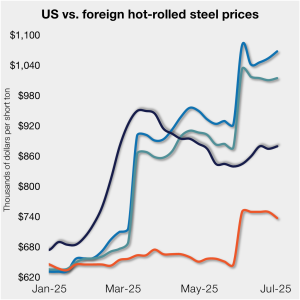
Doubled S232 tariff holds US HR prices below EU
David Schollaert presents this week's analysis of hot-rolled coil prices, foreign vs. domestic.

David Schollaert presents this week's analysis of hot-rolled coil prices, foreign vs. domestic.
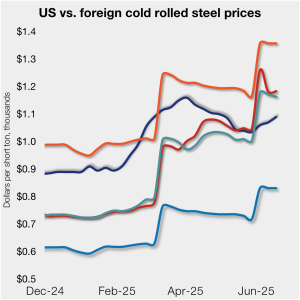
US cold-rolled (CR) coil prices continued to tick higher this week, while offshore markets were mixed.
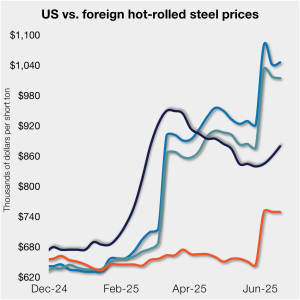
US hot-rolled coil prices crept up again this week but still trail imports from Europe.
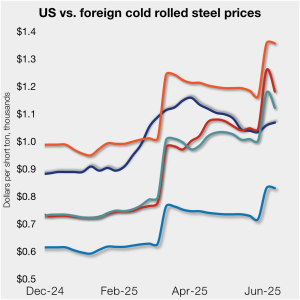
US cold-rolled (CR) coil prices edged up again this week, and most offshore markets moved in the opposite direction. But the diverging price moves stateside vs. abroad did little to impact pricing trends. The bigger impact was from Section 232, which were doubled to 50% as of June 3. The higher tariffs have resulted in […]

Subdued demand has continued to weigh on steel sheet prices globally.
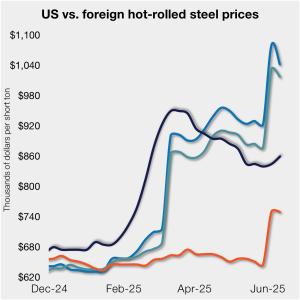
Domestic hot-rolled (HR) coil prices edged up marginally again this week, while offshore prices ticked down.
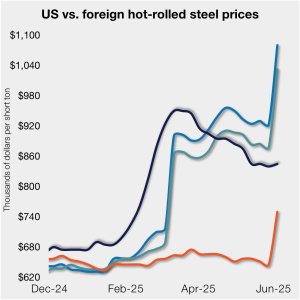
Domestic hot-rolled coil prices edged up marginally this week, while offshore prices ticked down.
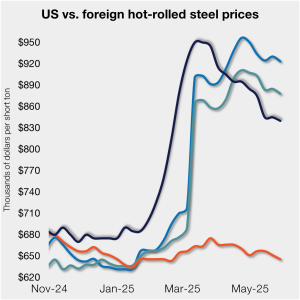
Domestic hot-rolled coil prices moved lower again, maintaining the downward move seen in eight of the last 10 weeks.
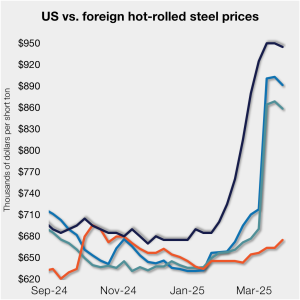
The threat of tariffs over the past two months has been a springboard for US prices. But the Section 232 reinstatement on March 13 narrowed the domestic premium over imports on a landed basis.
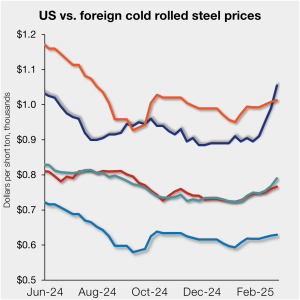
The price spread between stateside-produced CR and imports reached its widest margin in over a year.
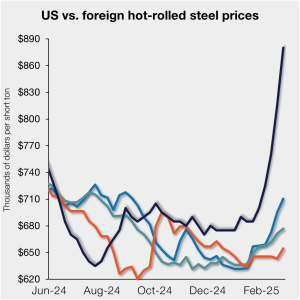
Hot-rolled (HR) coil prices continued to rally in the US this week, quickly outpacing price gains seen abroad. The result: US hot band prices have grown widely more expensive than imports on a landed basis. The premium US HR tags carry over HR prices abroad now stands at a 14-month high. SMU’s average domestic HR […]
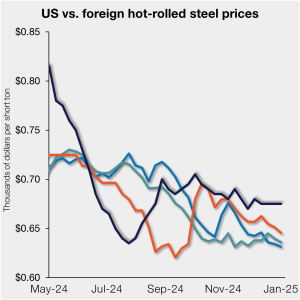
Hot-rolled (HR) coil prices were flat in the US this week, while tags in offshore markets were mostly down.
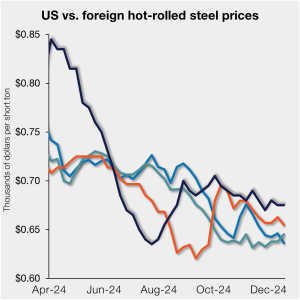
The price premium between stateside hot band and landed imports widened slightly this week.
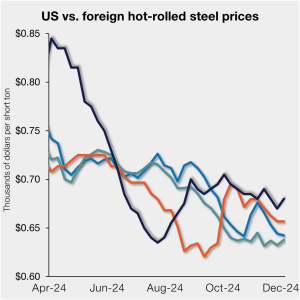
Hot-rolled (HR) coil prices ticked back up in the US this week, while tags in offshore markets moved in varying directions. Thus, the price premium between stateside hot band and imports on a landed basis widened slightly. After leveling with import prices in late August, stateside tags have been mostly stable and ahead of imports […]
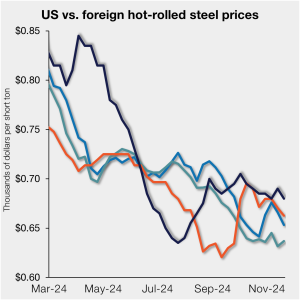
US hot-rolled (HR) coil prices slipped this week, while tags in offshore markets were also largely down. Thus, the price premium between stateside hot band and imports on a landed basis was relatively unchanged.
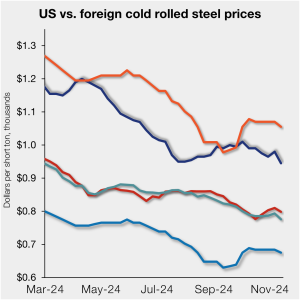
The price spread between US-produced cold-rolled (CR) coil and offshore products slipped in the week ended Nov. 15, on a landed basis.

This CRU analysis from discusses steel sheet prices, demand, and inventory levels around the globe this past week.
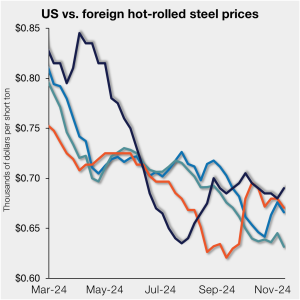
US hot-rolled (HR) coil prices edged up this week, while tags in offshore markets moved lower. As a result, domestic tags pulled ahead of imports on a landed basis. Since becoming level with import prices in late August, stateside tags had been mostly stable, though they slowly drifted closer to parity over the past month. […]
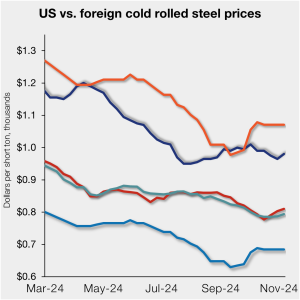
The price spread between US-produced cold-rolled (CR) coil and offshore products remained largely flat in the week ended Nov. 8, on a landed basis.

China’s steel export volumes reached 11.2 million metric tons (mt) in October, the highest monthly level since September 2015. Steel export prices were mostly stable in China and India this week, while in Turkey steel export prices increased week over week (w/w).
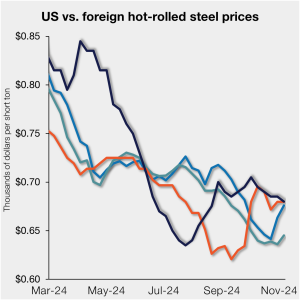
US hot-rolled (HR) coil prices moved lower this past week while tags in offshore markets were largely higher. Domestic tags are again nearly level with imports on a landed basis.
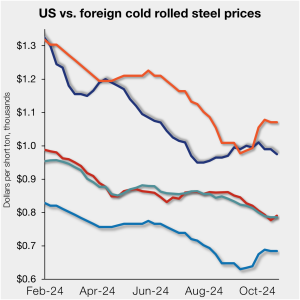
The price spread between US-produced cold-rolled (CR) coil and offshore products was negligibly tighter in the week ended Oct. 25, on a landed basis.
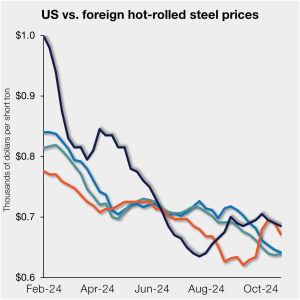
US hot-rolled (HR) coil prices moved lower again this past week. A similar trend was seen in offshore markets, keeping domestic tags marginally above imports on a landed basis.
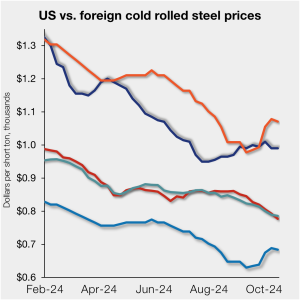
The price spread between US-produced cold-rolled (CR) coil and offshore products was negligibly wider in the week ended Oct. 18, on a landed basis.
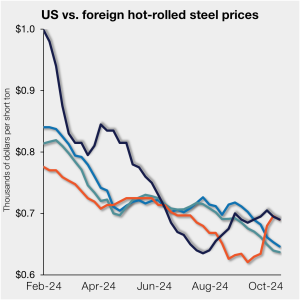
US hot-rolled (HR) coil prices slipped again this past week, mirroring movement in offshore markets. This kept domestic tags marginally higher than imports on a landed basis.
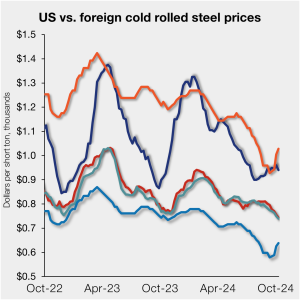
The price gap between US-produced cold-rolled (CR) coil and offshore products narrowed slightly again in the week ended Oct. 11, mainly due to a stateside price cut.
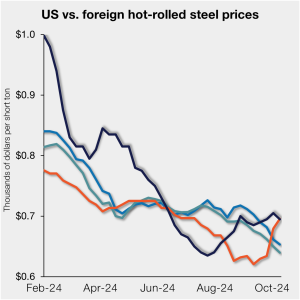
US hot-rolled (HR) coil prices slipped this past week but remain marginally higher than offshore material on a landed basis.
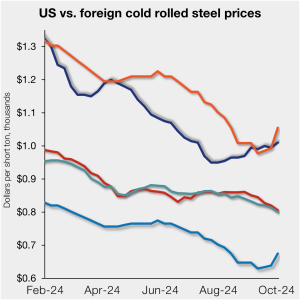
The price gap between US-produced cold-rolled (CR) coil and offshore products narrowed slightly in the week ended Oct. 4, mainly due to a price jump in Asian markets.
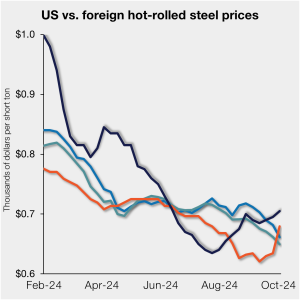
US hot-rolled (HR) coil prices moved slightly higher again this past week but remain marginally higher than offshore material on a landed basis. Since reaching parity with import prices in late August, domestic prices have been slowly pulling ahead of imports. This has been driven by a slight deviation in price movements – slow but […]
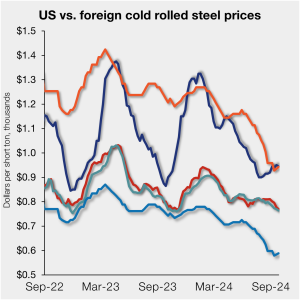
The price gap between US cold-rolled (CR) coil and offshore product has shrunk slightly this week ended Sept. 27 as stateside tags edged down. The premium slipped moderately but remains well ahead of the 10-month low from late July.